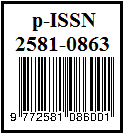Konstruksi Akuntansi Kerugian, Praktik Kepailitan Mengungkap Fraud Laporan Keuangan Klien
DOI:
https://doi.org/10.35814/jrb.v3i1.976Keywords:
Forensic Accounting, Curators, fraud actions, Budel (assets) bankruptcyAbstract
The purpose of this study is to interpret the construction of accounting losses in disclosing fraud and the bankruptcy practices of client financial statements. The research method used is a qualitative method - the interpretive paradigm with a phenomenal approach with method triangulation is done by comparing information or data in different ways. To obtain the truth of reliable information and a complete picture of certain information, researchers can use interview and observation or observation methods to check the truth. In addition, researchers can also use different informants to check the correctness of the information. Triangulation of this stage is done if the data or information obtained from the subject or research informants is doubtful. The results of this study were filing bankruptcy at the Commercial Court involving a supervisory judge and curator. In determining the validity of accounts payable by a supervisory judge used the science of forensic accounting and loss accounting, with the curator in charge of distributing bankruptcy (assets) to creditors in the order of division of property for separatist creditors, Preferred creditors and congruent creditors (creditors who have no collateral). In general, fraud actions carried out by debtors are by hiding assets and sales while fraud is carried out with the motive to obtain bankruptcy (assets).


.gif)













